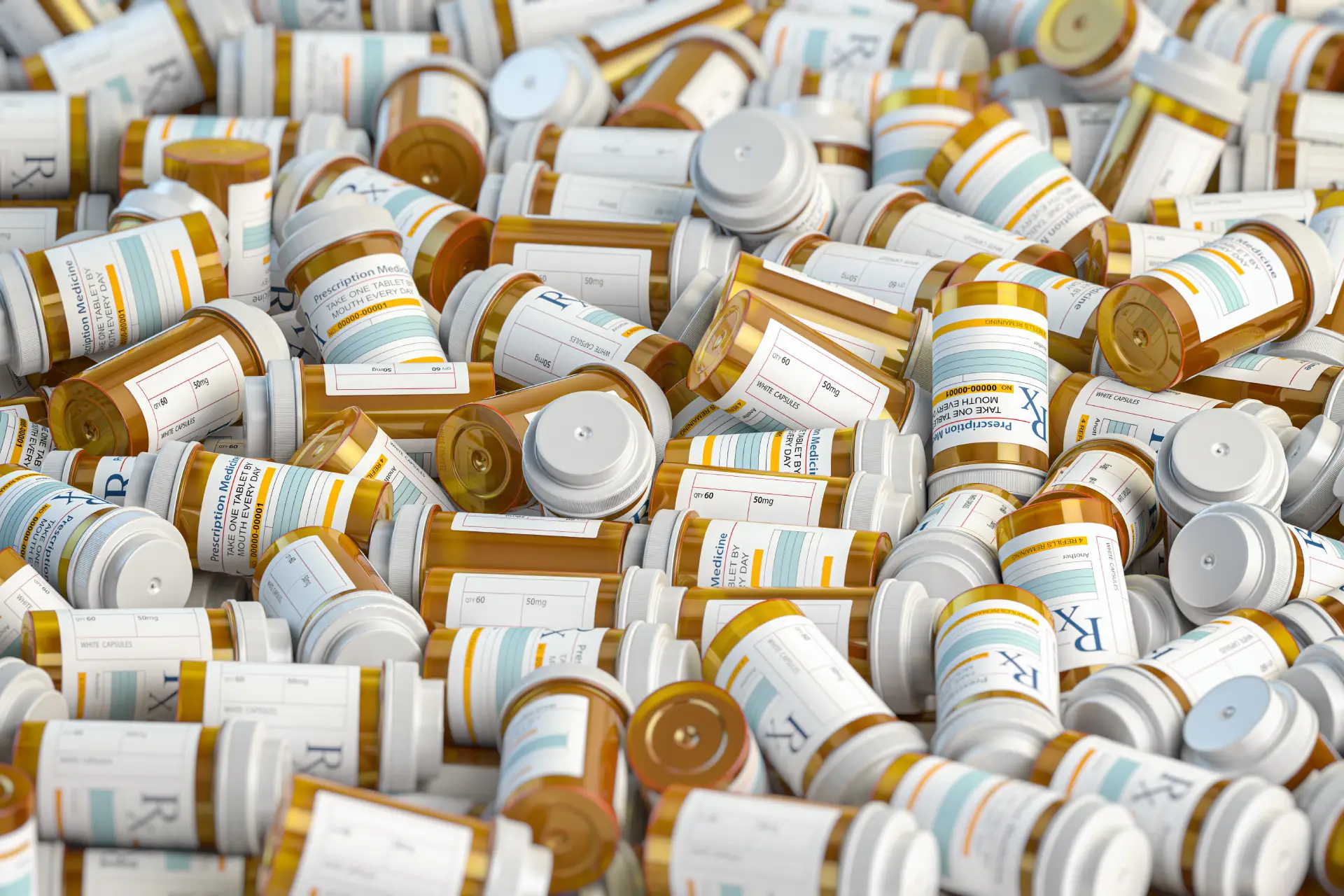Codeine Addiction Treatment in Long Island
Our Long Island codeine guide explains how this “weak” opioid turns into morphine in the body, the risks of tolerance, withdrawal, and dangerous combos, key warning signs, detox and medication options, proven therapies, harm reduction, family support, and aftercare with confidential referral help.
Covered by most insurance plans
Available to help you 24/7
Table of Contents
Codeine is a prescription opioid found in many cough syrups and pain relievers. Although it is considered a weaker opioid, it can still cause tolerance, dependence, addiction, and life threatening overdose. On Long Island, people often encounter codeine as part of combination products with acetaminophen or as a cough suppressant in promethazine codeine syrup. Long Island Addiction Resources is a confidential referral service that helps Nassau and Suffolk residents compare nearby licensed programs that fit their goals and insurance. We are not a rehab or medical provider.

What Is Codeine and Why It Becomes a Problem
Codeine is a naturally occurring opioid derived from the opium poppy. In the body it is converted by the liver enzyme CYP2D6 into morphine. This conversion is why two people can take the same dose and have very different effects. Some individuals convert more rapidly and experience stronger opioid effects at typical doses, which raises overdose risk. Codeine is often combined with acetaminophen for pain or with antihistamines in cough syrups. These combinations add risks like liver injury from excess acetaminophen or deep sedation when mixed with other depressants.
How Codeine Affects the Brain and Body
Like other opioids, codeine binds to mu opioid receptors and dampens pain signaling while triggering the brain’s reward circuits. Repeated exposure leads the nervous system to adapt. Over time the same dose feels weaker and people begin taking more or dosing more frequently. Physical dependence follows, which means the body produces withdrawal symptoms when levels drop. Beyond euphoria and pain relief, codeine commonly causes constipation, nausea, slowed reaction time, dizziness, itching, and drowsiness. Higher doses can slow breathing and heart rate and may cause fatal respiratory depression, especially if combined with alcohol, benzodiazepines, sleep aids, or other opioids.
Who Is Most at Risk on Long Island
Risk extends across ages, but patterns differ. Teens and young adults may misuse cough syrups for a high. Adults prescribed codeine for dental work or injuries may escalate use if pain persists. People with sleep apnea, chronic lung or heart disease, liver disease, or those who drink alcohol are at higher danger from the breathing effects of opioids. Individuals who are ultra rapid CYP2D6 metabolizers convert more codeine to morphine and can experience unexpectedly strong effects at standard doses.
Warning Signs of Codeine Misuse
- Using more than prescribed or refilling early
- Mixing codeine with alcohol or sedatives to boost effects
- Daytime drowsiness, slowed breathing, pinpoint pupils, slurred speech
- Constipation, nausea, frequent itching, abdominal pain
- Doctor shopping or secrecy around bottles or syrups
- Falling behind at work or school, conflicts at home, money issues

Special Dangers With Combination Products
Acetaminophen toxicity. Many codeine tablets contain acetaminophen. Taking higher doses or using multiple cold or pain products together can exceed safe daily limits and cause severe liver injury. Alcohol amplifies this risk.
Cough syrup sedation. Codeine cough syrups may include antihistamines that add sedation and impaired coordination. Mixing with alcohol or benzodiazepines greatly raises overdose risk.
Counterfeit pills. Tablets sold as prescription opioids on the street may contain fentanyl. One counterfeit pill can be fatal.
Withdrawal and Why Medical Support Helps
When dependent, stopping suddenly triggers withdrawal. Early symptoms include anxiety, restlessness, yawning, watery eyes, runny nose, sweating, and insomnia. As it peaks, many experience muscle and bone aches, abdominal cramps, nausea, vomiting, diarrhea, gooseflesh, chills, and strong cravings. While opioid withdrawal is usually not life threatening by itself, it is very uncomfortable and a common trigger for relapse. If other sedatives or alcohol are involved, additional withdrawal syndromes can occur and require medical care. A structured taper or medication assisted withdrawal reduces risk and discomfort.
Detox and Stabilization Options on Long Island
Care begins with a comprehensive assessment of medical history, current medicines, substance use patterns, mental health, and home supports. Based on risk and stability, detox may occur in an inpatient setting with 24 hour monitoring or through intensive outpatient protocols. The goals are to manage symptoms, prevent complications, begin medications that lower cravings, and connect you to the next level of care without gaps.
Medications That Make Recovery Safer
Buprenorphine. A partial opioid agonist that eases withdrawal and cravings with a ceiling effect that reduces overdose risk. Induction starts once moderate withdrawal is present. It can be continued long term for relapse prevention.
Methadone. A full opioid agonist dispensed in structured programs for people who benefit from daily observed dosing and close oversight.
Naltrexone. An opioid blocker used after full detox to reduce the rewarding effects if opioids are used. Requires complete abstinence before starting.
Adjunctive support. Non opioid medicines target nausea, diarrhea, cramps, insomnia, and anxiety. Hydration, nutrition, and sleep routines are integrated from day one.
Therapies That Strengthen Long Term Results
Cognitive Behavioral Therapy. Helps you map triggers, challenge high risk thoughts, and practice coping skills. You leave with a personalized plan that lists early warning signs and specific if then steps.
Dialectical Behavior Therapy skills. Teaches emotion regulation and distress tolerance for the intense waves that often lead back to use.
Motivational interviewing. Aligns treatment with your values and goals and builds momentum for change without judgment.
Family therapy and peer support. Improves communication and boundaries at home and reduces isolation through mutual aid groups and recovery coaching.

Levels of Care Near You
- Medical detox. Short term stabilization with symptom relief and transition planning.
- Residential or inpatient rehab. Twenty four hour structure for people who need distance from triggers and daily intensive therapy.
- Partial Hospitalization and Intensive Outpatient. Multiple therapy days per week with medication management, skills practice, and relapse prevention while living at home or in recovery housing.
- Standard outpatient care. Weekly therapy and medication follow up once symptoms and routines are stabilized.
Harm Reduction and Practical Safety
- Carry naloxone and show family how to use it. Avoid using alone.
- Do not mix codeine with alcohol, benzodiazepines, or sleep medications.
- Check every product for acetaminophen and track total daily intake.
- Avoid any pill that did not come from a pharmacy. Counterfeits may contain fentanyl.
Aftercare and Relapse Prevention
Recovery continues after detox or rehab ends. Effective aftercare includes regular medication management when indicated, ongoing therapy, peer groups, and routines that protect sleep, meals, exercise, and stress. Build a written plan that names personal triggers, lists coping actions, identifies people to call, and outlines steps to take if a lapse occurs so a slip does not become a relapse.
Interventions and Family Support
When a loved one does not recognize the problem, a well planned intervention can open the door to help. Trained facilitators prepare the family, coordinate messaging, and line up treatment so the person can enter care immediately. On Long Island, we can connect you with local interventionists and programs that fit your situation and insurance.
How We Help on Long Island
Long Island Addiction Resources is a connector and guide. We listen to your needs, verify benefits, and match you with licensed detox, residential, partial hospitalization, intensive outpatient, standard outpatient, and recovery housing options across Nassau and Suffolk. Our focus is person centered, evidence based care that fits your goals, schedule, and budget.
Begin Your Codeine Recovery Journey Today in Long Island
If you or a loved one are ready to end your alcohol and drug use, there are many recovery options available near you in Long Island
Are you ready to take back control over your life?
Making the decision to seek help is one of the hardest and bravest steps you can take. We know that the recovery process is not always easy—there may be challenges along the way—but every step forward brings you closer to a life free from the weight of addiction.
Find treatment options covered by insurance















Let today be
your Day 1
We'll get on a call, assess your health history, and verify your insurance. Today is Day 1. We can't wait to celebrate Day 1000 with you!
Fill out this simple form and we’ll call you right back.
Frequently Asked Questions
We'll get on a call, assess your health history, and verify your insurance. Today is Day 1. We can't wait to celebrate Day 1000 with you!
How is codeine commonly misused?
Misuse occurs when people take higher doses than prescribed, combine it with other substances, or use prescription cough syrup recreationally to achieve euphoric effects.
What are the risks of mixing codeine with other substances?
Combining codeine with alcohol, benzodiazepines, or acetaminophen-based products increases the risk of liver damage, respiratory depression, overdose, and death.
What are the warning signs of codeine misuse?
Signs include increasing doses, hiding use, “doctor shopping,” drowsiness, confusion, constipation, and slowed or shallow breathing.
Why is medical detox or tapering important for codeine withdrawal?
Medical supervision ensures a safer withdrawal process by managing symptoms, reducing discomfort, and preventing complications like dehydration or relapse.
What harm reduction strategies can prevent codeine overdose?
Carrying naloxone (Narcan), avoiding mixing substances, taking medication only as prescribed, and storing prescriptions safely can all reduce risk.
